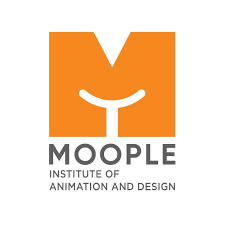Embarking on the journey of mastering 2D and 3D animation techniques opens up a world of creative possibilities and career opportunities. Animation isn’t just about bringing characters to life; it’s about storytelling, visual communication, and pushing the boundaries of imagination. In this blog, we’ll delve into the scope of animation courses, exploring the myriad career paths awaiting those who have honed their skills in both 2D and 3D animation.
Understanding the Fundamentals:
Before we dive into the vast expanse of career options, let’s briefly touch upon the fundamentals of 2D and 3D animation. 2D animation, the traditional form, involves creating movement in a two-dimensional space, typically using hand-drawn or computer-generated imagery. On the other hand, the scope of the 3D animation course adds depth to the visuals, allowing for more realistic and immersive storytelling through the manipulation of 3D models and environments.
Career Opportunities:
- Film and Television: The entertainment industry is a primary destination for skilled animators. Whether it’s producing animated feature films, television shows, or commercials, the demand for both 2D and 3D animators remains consistently high.
- Video Games: With the gaming industry experiencing exponential growth, there’s a constant need for animators to breathe life into game characters and environments. From indie studios to AAA game developers, opportunities abound for those proficient in both 2D and 3D animation techniques.
- Advertising and Marketing: Brands are increasingly turning to animation to convey their messages in engaging and memorable ways. Scope of animation courses are sought after to create advertisements, promotional videos, and marketing campaigns across various platforms.
- Educational Content: Animation is a powerful tool for educational purposes, making complex concepts easier to understand and retain. Animators proficient in both 2D and 3D animation techniques can find opportunities in creating educational videos, e-learning modules, and interactive simulations.
- Architectural Visualization: Architects and real estate developers rely on 3D animation to showcase their designs and properties. Animators who know 3D techniques can create photorealistic renderings and walkthroughs, helping clients visualize spaces before they are built.
- Medical and Scientific Animation: Animation plays a crucial role in visualizing complex medical procedures, biological processes, and scientific concepts. Animators with a background in both 2D and 3D animation can find opportunities in creating animation and visual effects course content for healthcare professionals, researchers, and students.
- Freelancing and Entrepreneurship: For those who prefer independence and creative freedom, freelancing or starting their animation studio is a viable option. With the rise of online platforms and digital marketplaces, animators can showcase their skills, collaborate with clients worldwide, and build their brands.
Conclusion:
Mastering both 2D and 3D animation techniques opens doors to a multitude of career paths, ranging from traditional animation studios to emerging industries like virtual reality and augmented reality. Whether you aspire to work in film and television, video games, advertising, education, or any other field, the skills you’ve acquired will serve as your passport to success in the dynamic world of animation. So, embrace the journey, continue honing your craft, and let your creativity soar in the boundless realm of animation.

